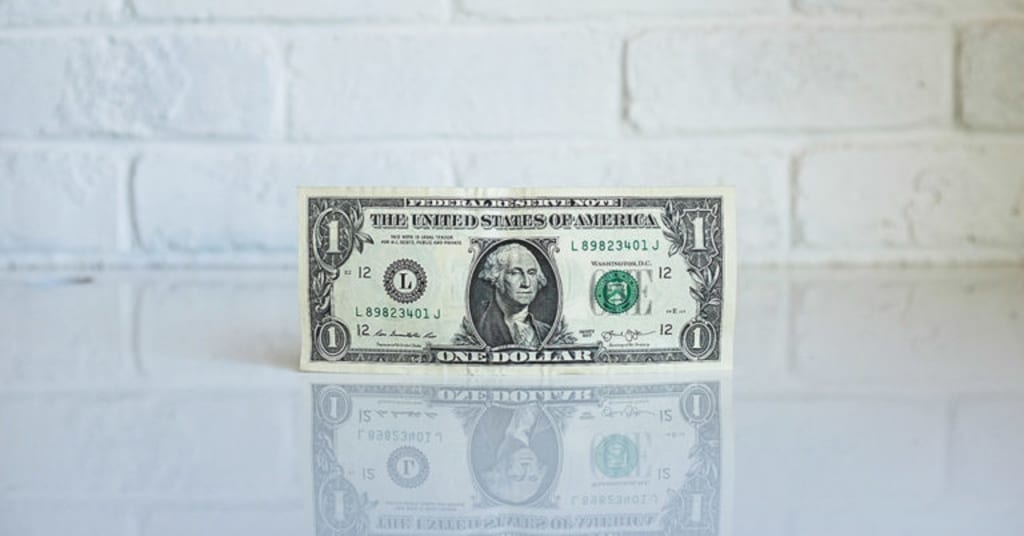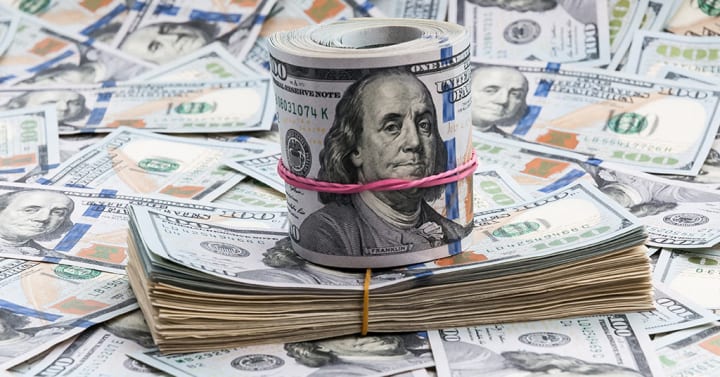30 interesting facts about the US dollar
Dollar

30 facts about the US dollar
1. The highest dollar denomination that has ever been in circulation is $10,000.
2. Malformed or torn banknotes can be exchanged. Nevertheless, you should have more than half of a note.
3. The first American coins were minted in 1792.
4. In 1862, the first USA paper money was printed. It was a solution for an issue, related to the shortage of coins.
5. Martha Washington is the only woman ever depicted on the US bill.
6. The George Washington portrait was first depicted on the $1 banknote in 1869.
7.Have you ever heard the expression “dirty money”? (we bet you have). Paper money is literally dirty since 94% of bills are contaminated with bacteria, while 7% of banknotes have dangerous pathogens on them.

8. $1 bills represent 45% of entire currency production.
9. The “In God We Trust” phrase first appeared on coins during the Civil War. Since 1955, it has been added to all coins.
10. The buffalo, depicted on a five-cent coin (“bison nickel”), once wandered in the Bronx Zoo.
11. If you need to trace a banknote by its serial number, then you should know that there is a site called “Where’s George?”, and it’s exactly what it does.
12. A stack of dollar notes one mile high equals $14.5M
. Silly Head was a name for US cents minted in 1839, because citizens believed the picture of Miss Liberty looked silly.
14. The “All-Seeing Eye” picture was included as a reflection of Divine Providence, while the Latin sentence below the pyramid on the $1 bill (NOVUS ORDO SECLORUM) means “A new order of the ages”.
15. About 90% of banknotes test positive for cocaine residue.
16. A $1 bill has 13 arrows, 13 leaves, 13 stars, and 13 stripes, and it was a symbol of the original 13 colonies.
17. “White cents” were made from 88 parts copper to 12 parts nickel. That’s why they look light (even white, to be accurate).
18. All American dollars are made from cotton (75%) and linen (25%).
19. The USA prints 37M notes daily, and it equals $696M.
20. If you decide to lay out a mile of pennies, then you should know that it equals $844,80. Thus, the USA is about $2.5M wide, from the west to the east coast.
21. The approximate lifespan of a $10 banknote is about 3.6 years, a $5 bill “lives” 3.8 years, a $1 note lasts 4.8 years, and a $100 bill can be in circulation for 18 years. However, the longevity of a coin is no less than 30 years.

22. Five-cent coins, minted from 1942 to 1945 can’t be called “nickel”, and for a good reason. They merely had no nickel in the alloy.
23. The fun thing is that counterfeit dollars are often detected due to the fact that they are usually more perfect than genuine bills.
24. $1M of $1 notes weigh almost as much as ’66 Volkswagen Beetle, while $1M of $20 banknotes weight almost as much as a car tire.
You will never find any dollar banknotes with an African American depicted on them, ever.
26. The largest dollar denomination ever printed was a banknote (gold certificate, to be accurate) of $100,000. It was intended for transactions between Federal Reserve banks, and it has never been in circulation.
27. The first person, depicted on a $1 bill was Salmon P. Chase, and it was in 1863 when he was still alive. Moreover, he was the incumbent secretary of the treasury. Thus, there is no surprise how he appeared to be on the bill, he just put himself on it. Six years later, in 1869 (as we mentioned above), George Washington settled his hubris down.
28. Andrew Jackson, the person on the $20 banknote, was a big confronter of paper money. He believed that only gold and silver coins were legal tender.
29. Old dollar bills are shredded and sold to companies that recycle them into building materials.
30. Statistically, Americans throw away about $62M worth of coins yearly.
About the Creator
Enjoyed the story? Support the Creator.
Subscribe for free to receive all their stories in your feed. You could also pledge your support or give them a one-off tip, letting them know you appreciate their work.





Comments
There are no comments for this story
Be the first to respond and start the conversation.